Creating a Temporary Thai Forest Monastery
As a Stepping Stone to a Permanent Monastery
Written by: Thanissaro Bhikkhu, Jacqui Balfour, Brock Brown, Russ Callaghan, June Fukushima, and Irfan Pirbhai
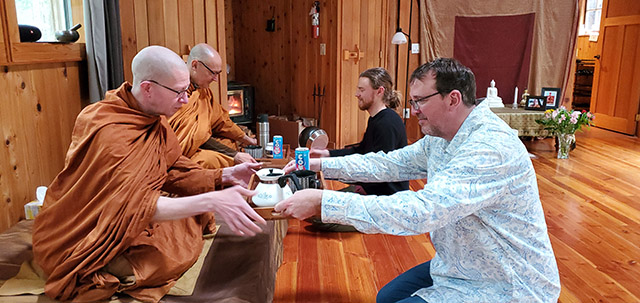
Lay supporters Mark Schmidt and Sam Tuck (L to R) offering trays of evening allowables to monastics Taan Will and Ajaan Peter.
Photos by: Robert Birch, Brock Brown, June Fukushima, John Jordan, Irfan Pirbhai, Alisa Suddhisanont, Suganya Viriyakosol
This past spring, the Aranya Refuge in Victoria, British Columbia, completed its fourth “monastery for a month.” This is an unusual creation of a temporary monastery, for which the group invited two monks from Metta Forest Monastery, in San Diego.
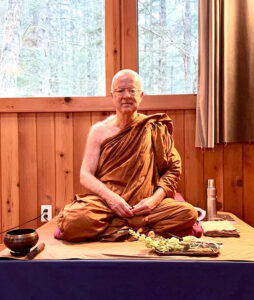
The two monks came and practiced at Earthspring Sanctuary Retreat Centre, in Highlands, B.C., adjacent to Gowlland Tod Provincial Park. The retreat, from mid-March to mid-April, supported 50 lay participants as overnight guests or day visitors.
During their time here, the monks took advantage of the seclusion offered by the forest to further their own practice, but they also offered daily teachings to those who came to support them, and to those who stayed on site for extended practice.
The schedule was that of a typical monastery in the Thai forest tradition, to which the monks belong. Each day started with early morning group meditation at 5:30, then a morning meal, followed by free time to meditate in solitude for most of the day. Every evening the monks offered a question-and-answer session, followed by chanting and another group meditation with a dhamma talk.
On April 13, participants celebrated Songkran, the Thai New Year. This included Buddha statues being bathed, and the monks receiving a water blessing from the lay guests.
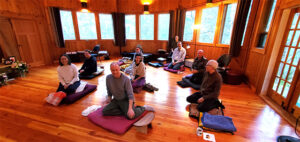
Since 2018 the Aranya Refuge has been offering this program of temporary monasteries, in hopes of laying the groundwork for a more permanent monastery on Vancouver Island. A key aspect is alerting islanders to the advantages of having a forest monastery in their midst.
Ajaan Suwat, a founder of Metta Forest Monastery, once said monasteries are not just for monks. They are for everyone who wants to benefit from direct contact with people who have devoted their lives to the practice of the dhamma and the vinaya. The latter are the rules of conduct at the core of monks’ training.

The first temporary monastery was organized in May, 2018 at Maple Bay, near Duncan, B.C., when two monks stayed in a private home adjacent to Mount Tzouhalem. This was followed by a similar arrangement in Metchosin, B.C., near Victoria, in May, 2019.
Soon after that, the Aranya Refuge took on its formal name—aranya means “wilderness” in the language of the early Buddhist texts—and was organized as a registered Canadian charity.
But then the pandemic prevented us from continuing what was intended to be an annual program. In the meantime we organized online teachings with Ajaan Geoff, more formally known as Thanissaro Bhikkhu, the abbot of Metta Forest Monastery. When the pandemic restrictions were relaxed, Ajaan Geoff and a second monk came to Earthspring for the month of November, 2022.
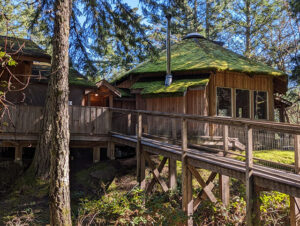
This was the first temporary monastery in a location that replicated the setting of a typical forest hermitage—a secluded forest complete with a meditation hall and individual huts. During that month, 50 people came from Victoria and other parts of B.C., the Pacific Northwest, and further afield in Canada and the U.S. Those people shared an opportunity to stay for extended periods, and to participate in activities typical of a forest monastery. They helped in the daily preparation and offering of food, assisted in the upkeep of the facilities, and meditated together and in solitude.
The Thai forest tradition was founded in the late 19th century by monks in the northeast region of Thailand, who had been inspired by two principles found in the Pali Canon, the earliest extant record of what the Buddha taught. The first principle was practicing the dhamma according to what the Buddha taught, not in line with one’s personal preferences. The second principle was following the customs of the noble ones, those who have gained at least their first taste of awakening.
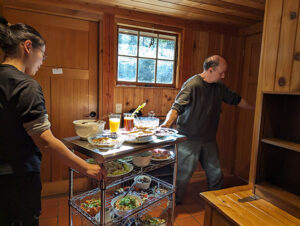
These principles mean several things: being content with the food, clothing, and shelter given to one, delighting in abandoning unskillful mental qualities and delighting in skillful mental qualities, and not altering the dhamma according to local traditions or customs. The founders of the tradition—Ajaan Sao Kantasilo and Ajaan Mun Bhuridatto—adhered closely to the vinaya and followed many of the optional ascetic practices, such as living in the forest and eating only one meal a day.
Their teachings were rooted in the early texts, emphasizing the importance of extensive concentration practice for truly understanding what the texts mean and fully benefitting from their teachings. These monks lived most of their lives in forest wilderness, and encouraged their many students to do so as well.

As they noted, the Buddha was born under a tree, gained awakening under a tree, and passed away under a tree, so there must be something special about a wilderness environment for finding the true dhamma. Although Buddhism has long been a civilizing force in the many countries to which it has spread, it draws its inner strength from the solitude of the wilderness. To stay true to its roots as it comes to North America, it needs a wilderness home.
Ajaan Geoff trained in this tradition for 14 years in Thailand, most of that time under the tutelage of Ajaan Fuang Jotiko, and then later for five years in Metta Forest Monastery, under the tutelage of Ajaan Suwat Suvaco.
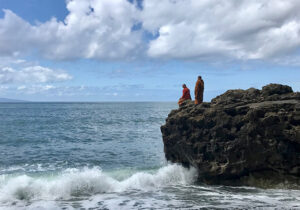
For more on the forest tradition, see the essay “The Customs of the Noble Ones,” on the website, dhammatalks.org.
As part of our continuing effort to bring this tradition to the forests of Vancouver Island, the Aranya Refuge is planning two activities for the coming year. This summer Ajaan Geoff has been invited to lead an August 17–18 weekend retreat in Victoria, B.C., on the theme of stream-entry, the first level of awakening.
Beginning in February, 2025, we will organize our first two-month temporary monastery, in Sooke, near Victoria. For more information, please consult our website: aranyarefuge.org.
This piece was created by the Aranya Refuge Theravada Buddhist Monastery Board of Directors: Thanissaro Bhikkhu, Jacqui Balfour, Brock Brown, Russ Callaghan, June Fukushima and Irfan Pirbhai.
